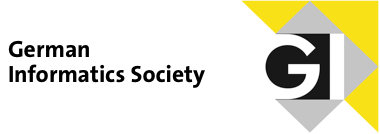Workshops and Tutorials
Below you can find an overview of the workshops and tutorials organized at ASE 2012. Please note that ASE 2012 provides other opportunities to make your attendance even more inspiring and productive!
The full program can be consulted online in the Program section of this website. The workshops and tutorials are organized on: September 3rd, 2012 (Monday) and September 4th, 2012 (Tuesday).
Overview
Monday (September 3rd, 2012)
- W1: Comparison and Versioning of Software Models (CVSM 2012) by Udo Kelter (et al.) (all day)
- T1: Software Developer Skills and Tools in Iterative and Agile Development by Václav Rajlich - unfortunately this tutorial is canceled
- T2: Automatic Structural Unit Testing of C Code by Nicky Williams and Nikolai Kosmatov (afternoon)
Tuesday (September 4th, 2012)
- W2: 8th International Workshop on Model-Based Methodologies for Pervasive and Embedded Software (MOMPES 2012) by Ricardo J. Machado, Rita Suzana Maciel, Julia Rubin, and Goetz Botterweck (all day)
- T3: The Use of Text Retrieval Techniques in Software Engineering by Andrian Marcus and Giuliano Antoniol (morning)
- T4: Safety, Dependability and Performance Analysis of Extended AADL Models by Marco Bozzano, Alessandro Cimatti, Joost-Pieter Katoen, and Thomas Noll (afternoon)
Monday (September 3rd, 2012)
- W1: Comparison and Versioning of Software Models (CVSM 2012) by Udo Kelter (et al.) (all day)
In model-driven development processes, models are being evolved over a longer period of time. Tools are thus needed which can manage versions, compare them, measure their (dis)similarity, merge different models into one, etc. This need has triggered a lot of research into appropriate algorithms, interfaces and tool architectures in the last ten years. While many basic questions have been answered and many prototypes of tools have been implemented, it remains unclear which concepts and architectures have found their way into practical application. Arguably, good model versioning tools still seem to be unavailable in many practical contexts. Existing prototypes appear to have been used mainly by “innovators” or “early adopters” of the new technology. The extent in which state-of-the-art tools are meeting, or not meeting, practical requirements and the reasons of any deficiencies are not well documented. This workshop aims at collecting and consolidating experience gained in this new technology, at distinguishing unresolved from solved questions, at identifying reasons why questions have remained unsolved, and at identifying new technical challenges which emerged after first practical applications. - T1: Software Developer Skills and Tools in Iterative and Agile Development by Václav Rajlich (morning)
Software engineers use numerous software processes and in each process, they are involved in numerous roles. Of these processes and roles, the role of software developer is the fundamental one. Software developers produce actual software, while other roles only assist in software production. This tutorial re-visits developer activities, taking into account the changing developer role within iterative and agile processes. The tutorial takes a holistic approach and deals with the big picture. It surveys insights gained by the recent research of the processes, techniques, and tools that are available to the developers. It points the attendees to further reading for more specific technical issues. The literature survey that is a part of the tutorial will be handed out to the participants. - T2: Automatic Structural Unit Testing of C Code by Nicky Williams and Nikolai Kosmatov (afternoon)
PathCrawler is an automatic tool developed at CEA LIST to automate structural unit testing of C functions. It is based on the highly successful concolic (or dynamic symbolic execution) method. The tutorial will take advantage of the latest version of PathCrawler which is in the form of a freely available web-based testing service: PathCrawler-online.com. This online version enables a novel form of tutorial in which participants bring their own laptop or tablet computer and try out examples themselves. After a brief presentation of PathCrawler, the tutorial will show participants how to easily and quickly test their code. Based on different examples of C code, users will be guided through the input parameters and shown how the outputs can help in debugging or justifying coverage. Some limitations and novel uses of structural testing will also be illustrated. The tutorial is aimed mainly at software engineering students and professionals. They will learn more about the state of the art in automated software testing and how it could help them in their future career in software development or validation. Software engineering lecturers may also be interested in how a tool such as PathCrawler-online can help in teaching software testing. The only necessary background is some familiarity with the C language.
Tuesday (September 4th, 2012)
- W2: 8th International Workshop on Model-Based Methodologies for Pervasive and Embedded Software (MOMPES 2012) by Ricardo J. Machado, Rita Suzana Maciel, Julia Rubin, and Goetz Botterweck (all day)
Model-Based Development (MBD) is a software development approach that relies on modelling and on systematic transition from models to executable code. The MOMPES workshop focuses on the theoretical and practical aspects related to the adoption of MBD methodologies (notations, processes, methods, and tools) for the construction of software for pervasive and embedded systems. In the context of ASE 2012, the workshop focuses on how to automate or partially automate tasks in this area to achieve significant improvements in quality and productivity - T3: The Use of Text Retrieval Techniques in Software Engineering by Andrian Marcus and Giuliano Antoniol (morning)
During software evolution many related artifacts are created or modified. Some of these are composed of structured data (e.g., analysis data), some contain semi-structured information (e.g., source code), and many include unstructured information (e.g., natural language text). Software artifacts written in natural language (e.g., requirements, design documents, user manuals, scenarios, bug reports, developersʼ messages, etc.) together with the comments and identifiers in the source code encode to a large degree the domain of the software, the developersʼ knowledge about the system, capture design decisions, developer information, etc. In many software projects the amount of the unstructured information exceeds the size of the source code by one order of magnitude. Retrieving and analyzing the textual information existing in software are extremely important in supporting program comprehension and a variety of software evolution tasks. Text retrieval (TR) is a branch of information retrieval (IR) where the information is stored primarily in the form of text. TR methods are suitable candidates to help in the retrieval and the analysis of unstructured data embedded in software. Most software engineering professionals and researchers are not exposed to TR in their training. This tutorial presents some of the most popular TR methods and their applications in software engineering. Special attention is given to two specific tasks, where the use of TR methods proved to be very successful: concept location in software and traceability link recovery between software artifacts. The tutorial aims at providing the sufficient knowledge for any software engineering researcher or practitioner to start using TR methods in their work. - T4: Safety, Dependability and Performance Analysis of Extended AADL Models by Marco Bozzano, Alessandro Cimatti, Joost-Pieter Katoen, and Thomas Noll (afternoon)
This tutorial presents a component-based modeling approach to system-software co-engineering of real-time embedded systems, in particular aerospace systems. Our method is centered around the standardized Architecture Analysis and Design Language (AADL) modeling framework. Based on the core features of AADL and its Error Model Annex, we have set up a modeling framework that supports a variety of system analysis and verification methods. Its major distinguishing aspects are the possibility to describe hardware and software components and their nominal operation, hybrid (and timing) aspects, as well as probabilistic faults and their propagation and recovery. Moreover, it supports dynamic (i.e., on-the-fly) reconfiguration of components and inter-component connections. The operational semantics gives a precise interpretation of specifications by providing a mapping onto networks of event-data automata. These networks are then subject to different kinds of formal analysis such as model checking, safety and dependability analysis, and performance evaluation. We demonstrate tool support realizing these analyses and report on industrial case studies that have been carried out in the context of aerospace systems. The tool is publicly available.





